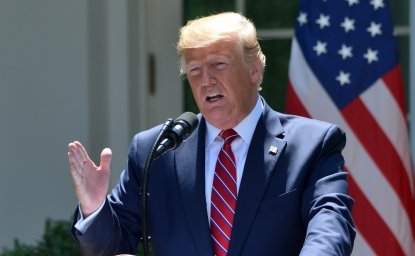
A blog of the Brazil Institute
Assessing Latin America as a monolith is a terrible mistake. Besides being extremely diverse in cultural, social, and even political terms, the region's economic aggregates often hide significant country differences. Average results are pulled by a handful of larger economies which perform as outliers in a region filled with smaller markets. To assess how the Brazilian economy has performed compared to its neighbors requires looking beyond regional averages, to country-specific economic outcomes; and we have focused on the region's other major economic players: Mexico, Colombia, Chile, and Argentina.
The history of Latin American economy is a tale of many ups and downs, an inconsistent struggle for development which has also caused many political shifts—and, in many cases, troubles. Following a wave of free-market reforms in the 1990s, the region—and South America, in particular—shifted politically from the center-right to the center-left in the early 2000s. The trend, known as the “Pink Tide,” profited from the concurrent commodities boom, with Chinese demand for basic products such as soy and iron reaching levels never seen before. The resulting cash inflow allowed Brazil and other countries in the region to reduce inequality and lift millions out of poverty, leading many to believe that Latin America's time had arrived.
But overall, countries chose to focus on fostering consumption rather than investments or increased productivity, and few infrastructure revolutions were made—Brazil being a textbook example. When the global financial crisis finally hit the region (after some delay), the fall from grace was rather brutal. Brazil in particular suffered several years of deep economic recession followed by the current anemic recovery. Brazil and the rest of Latin America is set to grow at much lower rates than the rest of the world this decade, and many of those who left poverty during the boom years have fallen back into economic desperation.
These economic difficulties perhaps help explain why, in country after country, the pink tide has been replaced by a strong swing to the right—in some cases, to the far-right.

Next, we compare how the Brazilian economy fared since 2000, against other major economies of Latin America.
Gross Domestic Product
Data shows that the last global financial crisis left lingering effects on Latin America—with none of the top economies having recovered pre-crisis GDP growth rates. Chile and Colombia, however, have avoided the same level of inconsistency experienced by the other analyzed countries. Argentina, on the other end, has a GDP growth curve that looks more like a cardiac monitor.

Brazil's sheer size makes the country an outlier. But, looking at the global picture, we can see that direct investment by non-resident investors has doubled between 2008 to 2011. In recent years, China has poured money into the region, heading dozens of infrastructure projects in several countries—rivaling the U.S. and Europe in terms of influence in the region. If in 2010 British magazine The Economist said the region was “Nobody's backyard,” several foreign interests are now being invited round to play.

International Reserves
At the turn of the century, Brazil lacked significant international reserves, making the country more susceptible to speculative attacks, as reporter Natália Scalzaretto explained. Having that cushion became an obsession during the administration of former President Lula. In the last 18 years, Brazil has multiplied its international reserves eleven-fold, while Mexico's expanded five-fold during the same period.

Inflation
When it comes to price hikes, the region’s main economies follow a similar curve, although Chile has lower inflation than the rest. Brazil sits in the middle of the pack. The outlier, once again, is Argentina. The country experienced huge peaks in 2002, and since 2013 it has not posted a yearly inflation rate of lower than 20.8 percent.

Labor Market
Unemployment is one of the main drivers of disgruntlement in Brazil, with over 12 million people out of the workforce. Among the countries included in this assessment, Brazil has the highest unemployment rate, even if the figures are going up in Argentina (quite sharply), Chile, and Colombia. Mexico on the other hand, with only 3.32 percent of workers without a job, essentially enjoys full employment.

Life Expectancy
That was one indicator in which all countries have progressed at similar rates, but Chilean residents live much longer than other Latin Americans, as their country boasts the best human development figures in the region. In Brazil, the numbers have improved a lot, and they would be even better were it not for its incredibly high murder rates—which victimize many of the country’s youth.

Violence
A 2018 study by the Inter-American Development Bank (IDB) shows that Latin America is the most violent region in the world, with 39 percent of global homicides. Brazil tops the list, with 29.5 per 100,000 inhabitants. Argentina and Chile, with higher levels of education and development, have the lowest murder rates. Colombia’s case is the most impressive of the group, with rates taking a nosedive this century—from 68.3 per 100,000 people in 2002 to 25.5 in 2016, largely thanks to the peace process between governments and FARC revolutionary fighters.

Infant Mortality
Reducing infant mortality is among the UN’s Millennium Development Goals. Despite having progressed since the turn of the century, Brazil and most other Latin American countries still have levels below what is considered acceptable by the World Health Organization—10 per 1,000 births. However, Argentina and Chile are on par with Western Europe.

Like the content? Subscribe to the Brazilian Report using the discount code BI-TBR19 to get 20 percent off any annual plan.
Author

Brazil Institute
The Brazil Institute—the only country-specific policy institution focused on Brazil in Washington—aims to deepen understanding of Brazil’s complex landscape and strengthen relations between Brazilian and US institutions across all sectors. Read more

Explore More in Brazil Builds
Browse Brazil Builds
They're Still Here: Brazil's unfinished reckoning with military impunity




